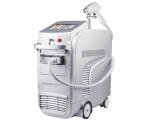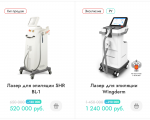- Wipe high-touch areas
- Food safety: Keep away from insects
- Oxygen helps it work efficiently
- Cleaning and inspection are essential
- 11 recommendations for the maintenance of the refrigerated display case
- Keep your temperature under control
- Common Challenges of Commercial Refrigeration, in need of repair:
In the small business industry, refrigeration maintenance or lack thereof, directly affects food safety. Lack of maintenance affects the cooling and energy efficiency of the equipment, making the equipment work more intensively, resulting in higher energy costs and resulting in faster failure of refrigeration equipment due to overuse and, ultimately, to food spoilage and loss of profitability for your small business.
It is worth noting right away, What you need to buy refrigeration equipment from trusted sellers with a history, who sell only high-quality goods. For example, in the city of Minsk, a good offer from the company SaYurS – https://sajurs.by/holodilnye-vitriny/ Refrigerated display cases in a wide range, of different shapes, Colors and purposes. Perform an integrated approach – On-site visit, Measurement of the room for installation, selection and coordination of the necessary equipment, Preparation for placement and installation. Direct deliveries, Complete set, warranty 1-2 years and good reputation with 2013 of the year.

Routine maintenance of commercial refrigeration equipment is more important, Than ever before, As sanitation and prevention are being mainstreamed during this pandemic. Health checks are carried out regularly, and, If your devices don't maintain temperature, The result is irregularities and hefty fines, which can affect your profits and reputation.
Failure to comply with food safety regulations due to, that your cooling devices are not working optimally, is simply not good business ethics. Servicing Your Commercial Freezers, marts, cabinets or refrigerators, does not always require contacting support and visiting a third-party specialist. You can do it yourself or have trusted personnel do minor scheduled maintenance work, to monitor the condition of your storefronts. Regular maintenance within the company not only helps to extend the life of refrigeration equipment, but is also often mandatory to maintain warranty coverage.
Wipe high-touch areas
Commercial display refrigerators and freezer doors are always opened and closed by customers. If you don't clean your hands, glass, door frames and do not wipe the outer surface of your devices, Bacteria and modern viruses can survive on the surface for several days. It goes without saying, What You Should, At least, several times a day, frequently wipe handles and front doors with disinfectant. If you want to be even more accommodating to your customers, You can store hand sanitizer or hand sanitizer wipes (with an alcohol content of at least 70%) next to refrigeration units with glass door.
Food safety: Keep away from insects
Business owners should do a deep cleaning of their commercial refrigeration units on a monthly basis. Although Cleanliness and maintenance of refrigeration equipment is more important, Than ever before, For owners business, they go beyond food safety. It's just a reminder of, that if the units are not properly maintained and cleaned or if their temperature is not stabilized, Commercial refrigerators and freezers can quickly become a haven for bacteria. Under the right breeding conditions, the number of bacteria, contained in food, can be doubled every 10 minutes.
Oxygen helps it work efficiently
A clogged condenser in a commercial refrigerator or freezer can cause equipment failure, Overheating, spoilage of the product, increased energy costs and even, possibly, To void the warranty. Think about your lungs and, How they allow you to function and live. You have the same capacitor, These are the "lungs" of your refrigerators. The installation instructions for the refrigeration equipment indicate, that cooling devices should be kept away from surrounding walls and nowhere near the equipment, which generates heat or produces oil and dirt in the air. Each unit should also have its own electrical outlet, and once installed, a lock check should become commonplace.
the, How do you store food and beverages inside the device, is of great importance. Think about uniformity, Your products should be evenly spread out inside the unit. Overload can block internal airflow, And this can contribute to food safety problems, e.g. food spoilage. However, You don't have to overfill the shelves, since the thermal mass of frozen or refrigerated foods helps to maintain the internal temperature. The conclusion is that, to keep your commercial refrigerated cabinet full enough, but not overcrowded.
Cleaning and inspection are essential
Keep strong cleaning products, such as bleach, away from refrigerators and freezers with glass doors, they can degrade the quality of food in refrigerators and affect the smell and, possibly, Taste of food, that you sell. Think about that, To use food-safe detergent and soft cloth, This will allow the soap to interact with bacterial fats, which remove pathogens and viruses from surfaces, and then washed off with water. A soft cloth is the best way to prevent scratches on the glass door of the device. Do not spray undiluted cleaner directly onto the unit, Excessive amounts of liquid may leak into electrical areas and cause a malfunction of the device or a risk of electric shock. Each Original Equipment Manufacturer installs its own Refrigeration Cleaning Instructions, And you should always follow these guidelines.
11 recommendations for the maintenance of the refrigerated display case
Here are some tips, Which should be considered when using stand-alone commercial units of refrigeration equipment:
- Leave the doors open, To dry the inside of the refrigerated display cabinet device, Then wipe all surfaces with a food-safe detergent. Some areas will be unavailable, Therefore, it is important to leave the doors open and ensure sufficient airflow to evaporate most of the moisture.
- Always unplug the device before cleaning. (Some devices may still work with fan motors and electronics even when turned off.)
- Additional time is required to completely melt the ice in industrial freezers, especially in freezers without automatic defrosting. Avoid scraping off ice from the inside of the device, as this can damage the device or even puncture the wall, potentially damaging the cooling system.
- Remove all food from the unit and thoroughly clean all sides inside the refrigerated display case, as this can cause an unpleasant odor and mold formation.
- Inspect the device for damage. for example, wiping the doors, Check the gaskets for gaps and tears. If you can't put them back in place, they need to be replaced.
- Leave the door slightly ajar, so that the remaining moisture can go away. Failure to do so may also result in odor and mold inside the device.
- If your device has a conventional capacitor, Remove the front grille and use a small hand cloth to clean the inside and, if necessary, vacuum cleaner to clean any additional debris. Then reinstall the front grille. Some units are built with capacitors, low-maintenance, which require regular visual inspections and much less frequent cleaning, than conventional capacitors.
- Rubber gaskets, forming a seal between the door and the cabinet, wear out and / or damaged over time / With long-term use. Run your fingers over the gasket regularly, When the door is open, To check, Are there any irregularities?, dents or other problems. Do the same, When the door is closed, and pay attention to the cold air outlet. Check the hinges and handles, To make sure, that the doors close properly.
- When restarting the equipment, allow the unit to cool to the ideal operating temperature before loading the product.
- To avoid contamination, store the cleaning equipment for refrigeration units separately, which is used for floors or other equipment in the store.
- Some glass doors have special coatings to improve thermal and visual performance, which may be damaged by the use of unsuitable cleaning products. Follow the specific instructions, set out in the hardware manual for your model.
Keep your temperature under control
Healthy temperature – It is a healthy refrigeration unit. Temperature fluctuations can potentially stimulate bacterial growth, pathogens and cross-contamination. Refrigerated display cases in supermarkets open and close all day for access to food, Therefore, maintaining the optimum temperature inside the refrigerator is essential. Take, for example, Refrigerated products, such as dishes, Cooked in the microwave, which should be stored in the range from 3 to 5 °C. Short “Temperature spikes”, not exceeding 30 minutes, at temperatures above 5 °C. If you don't have a fuse, working with temperature changes, You should aim to control your temperature more often, To make sure, that it is in the normal range. For efficiency, disinfect the handles on the doors of the refrigerated display case at the same time, What you need to do often and so, And in this case, simultaneously controlling the temperature in the installation.
Entrepreneurs have stepped up their activities and are leading the way, proposing pandemic prevention measures and technical innovation, such as Contactless payments and opening doors, Remote Internet Monitoring of things, reducing the number of touchpoints with customers. Besides, Buying freezers and refrigerators, equipped with self-cleaning capacitors, digital thermostats and food safety locks, also goes a long way in protecting your products and, More importantly, People, to whom you sell them.
Consider buying units with built-in digital thermostats, which will monitor the internal temperature and issue warnings, If the doors are left open. Use Fully integrated smart sensor monitors, such as Smart Lock by Minus Forty, which detect that the high temperature threshold has been reached. This is important for safe operation and maintaining the integrity of the product.
Unsupervised retail, Especially in small businesses, – It's a thriving business, which relies on well-functioning commercial refrigeration technologies. It is important to keep in mind regular inspections and maintenance protocols, To protect your products on the shelf and extend the life of your devices. Taking care of your devices, You also care about your customers. Well-groomed showcases – These are safe and healthy units, that meet the needs of your customers and ultimately help your business thrive and be profitable.
Common Challenges of Commercial Refrigeration, in need of repair:
-
There is water flowing in your refrigerator:
If your refrigerator is leaking, The cause may be a clogged drain hose or drain hole for defrosting. Or the gasket around the door is worn out.
-
There is liquid in the fresh food compartments:
If liquid has accumulated in the compartments of the refrigerator cabinet for fresh food, This may be the result of old or damaged door seals. Check your seals and call technicians for a replacement.
-
There is severe frost in the freezer:
If you notice heavy frost in the freezer, possibly, the defrost system is faulty or the evaporator fan motor may need to be replaced.
-
Your refrigerator has stopped working:
If Your Commercial Display Refrigerator Has Stopped Working At All, The first step is to check the thermostat – probably, you need to replace it.
-
Your refrigerator compartment is not refrigerated properly:
If your refrigerator is having trouble maintaining the temperature, The reason for this may be the thermostat, door gasket or clogged drain.
-
Your refrigerator makes strange noises:
If your device makes strange or loud noises, This may indicate a malfunction of the compressor motor or fan wear.
-
Failure of Commercial Refrigerator Parts:
Door gaskets, thermostats and more:
When one part of your Commercial refrigeration system fails, This can disrupt work for more than one day. One of the most common parts, failing, – This is a door gasket, because Commercial refrigerators are found Very wide application. Check the seals and gaskets of commercial refrigerators annually as part of regular maintenance.











